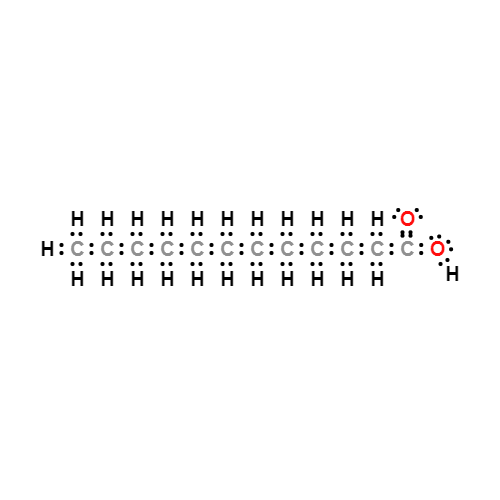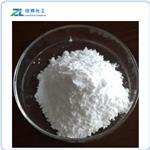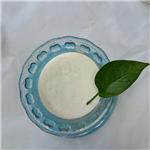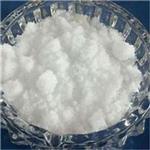Lauric acid
- CAS No.
- 143-07-7
- Chemical Name:
- Lauric acid
- Synonyms
- DODECANOIC ACID;C12;Emery651;Vulvic acid;FEMA 2614;lauric acid, pure;LAUROSTEARIC ACID;N-DODECANOIC ACID;Lauric acid 98-101 % (acidimetric);Fatty acid methyl ester sulfonate (MES)
- CBNumber:
- CB0357278
- Molecular Formula:
- C12H24O2
Lewis structure

- Molecular Weight:
- 200.32
- MDL Number:
- MFCD00002736
- MOL File:
- 143-07-7.mol
- MSDS File:
- SDS
| Melting point | 44-46 °C (lit.) |
|---|---|
| Boiling point | 225 °C/100 mmHg (lit.) |
| Density | 0.883 g/mL at 25 °C (lit.) |
| vapor pressure | 1 mm Hg ( 121 °C) |
| FEMA | 2614 | LAURIC ACID |
| refractive index | 1.4304 |
| Flash point | >230 °F |
| storage temp. | 2-8°C |
| solubility | 4.81mg/l |
| form | Crystalline Powder of Flakes |
| pka | pKa 4.92(H2O,t =25.0) (Uncertain) |
| Specific Gravity | 0.883 |
| color | White |
| Odor | at 100.00 %. mild fatty coconut bay oil |
| Odor Type | fatty |
| explosive limit | 0.6%(V) |
| Water Solubility | insoluble |
| λmax | 207nm(MeOH)(lit.) |
| JECFA Number | 111 |
| Merck | 14,5384 |
| BRN | 1099477 |
| Stability | Stable. Combustible. Incompatible with bases, oxidizing agents, reducing agents. |
| InChIKey | POULHZVOKOAJMA-UHFFFAOYSA-N |
| LogP | 5 |
| Dissociation constant | 5.3 at 20℃ |
| Substances Added to Food (formerly EAFUS) | LAURIC ACID |
| CAS DataBase Reference | 143-07-7(CAS DataBase Reference) |
| EWG's Food Scores | 1 |
| FDA UNII | 1160N9NU9U |
| NIST Chemistry Reference | Dodecanoic acid(143-07-7) |
| EPA Substance Registry System | Lauric acid (143-07-7) |
SAFETY
Risk and Safety Statements
| Symbol(GHS) |  GHS05 |
|||||||||
|---|---|---|---|---|---|---|---|---|---|---|
| Signal word | Danger | |||||||||
| Hazard statements | H318 | |||||||||
| Precautionary statements | P280-P305+P351+P338 | |||||||||
| Hazard Codes | Xi | |||||||||
| Risk Statements | 36/38-41-36/37/38 | |||||||||
| Safety Statements | 37/39-26-39-36-36/39-24/25 | |||||||||
| WGK Germany | 1 | |||||||||
| RTECS | OE9800000 | |||||||||
| Autoignition Temperature | 250 °C | |||||||||
| TSCA | Yes | |||||||||
| HS Code | 29159010 | |||||||||
| Hazardous Substances Data | 143-07-7(Hazardous Substances Data) | |||||||||
| Toxicity | LD50 i.v. in mice: 131 ±5.7 mg/kg (Or, Wretlind) | |||||||||
| NFPA 704 |
|
Lauric acid price More Price(69)
| Manufacturer | Product number | Product description | CAS number | Packaging | Price | Updated | Buy |
|---|---|---|---|---|---|---|---|
| Sigma-Aldrich | W261416 | Lauric acid natural, ≥98%, FCC, FG | 143-07-7 | 1kg | $104 | 2024-03-01 | Buy |
| Sigma-Aldrich | W261416 | Lauric acid natural, ≥98%, FCC, FG | 143-07-7 | 5kg | $322 | 2024-03-01 | Buy |
| Sigma-Aldrich | W261416 | Lauric acid natural, ≥98%, FCC, FG | 143-07-7 | 10Kg | $544 | 2024-03-01 | Buy |
| Sigma-Aldrich | W261408 | Lauric acid ≥98%, FCC, FG | 143-07-7 | 1kg | $76.5 | 2024-03-01 | Buy |
| Sigma-Aldrich | W261408 | Lauric acid ≥98%, FCC, FG | 143-07-7 | 5kg | $128 | 2024-03-01 | Buy |
Lauric acid Chemical Properties,Uses,Production
Chemical properties
Colorless needle-like crystals. Soluble in methanol, slightly soluble in acetone and petroleum ether.
Uses
1. lauric acid Used for the preparation of alkyd resins, as well as wetting agents, detergents and pesticides
2. Used for peeling vegetables and fruits with a maximum amount of 3.0g/kg.
3. Used as defoamer; GB 2760-86 provides for the spices allowed to use; used for the preparation of other food grade additives.
4. lauric acid is widely used in the surfactant industry and can be, according to the classification of surfactants, divided into cationic, anionic, non-ionic and amphoteric type. The surfactants types of dodecanoic acid are listed in the attached table of this item. Some surfactants of the derivatives of dodecanoic acid and dodecanol are also antiseptics, such as dodecyl dimethyl benzyl ammonium chloride (geramine), dodecyl dimethyl benzyl ammonium bromide (bromo-geramine) and dodecyl dimethyl (2-phenoxyethyl) ammonium bromide (domiphen bromide). The dodecyldimethyllammonium-2,4,5-trichlorophenolate in these derivatives can be used as citrus preservative. Dodecanoic acid also has many applications in plastic additives, food additives, spices and pharmaceutical industries.
What Is Lauric Acid?
Lauric acid is a medium-length long-chain fatty acid, or lipid, that makes up about half of the fatty acids within coconut oil. It’s a powerful substance that is sometimes extracted from the coconut for use in developing monolaurin. Monolaurin is an antimicrobial agent that is able to fight bacteria, viruses, yeasts, and other pathogens. Because you can’t ingest lauric acid alone (it’s irritating and not found alone in nature), you’re most likely to get it in the form of coconut oil or from fresh coconuts.
Though coconut oil is being studied at a breakneck pace, much of the research doesn’t pinpoint what in the oil is responsible for its reported benefits. Because coconut oil contains much more than just lauric acid, it would be a stretch to credit it with all of the coconut oil benefits. Still, a 2015 analysis suggests that many of the benefits tied to coconut oil are directly linked to lauric acid. Among the benefits, they suggest lauric acid could aid weight loss and even protect against Alzheimer’s disease. Its effects on blood cholesterol levels still need to be clarified.
This research suggests that the benefits of lauric acid are due to how the body uses it. The majority of lauric acid is sent directly to the liver, where it’s converted to energy rather than stored as fat. When compared with other saturated fats, lauric acid contributes the least to fat storage.
Including Lauric Acid in Your Diet
Lauric acid can be taken as a supplement, but it is most commonly consumed as part of coconut oil or palm kernel oil. It is considered to be safe based on the amounts generally found in food. According to NYU Langone Medical Center, coconut and palm kernel oil contain up to 15 percent MCTs, along with a number of other fats. However, because they are still pure oil, limit your intake of MCTs to stay within the recommended 5 to 7 teaspoons of oil per day as set out by the U.S. Department of Agriculture. You can use coconut and palm kernel oil for stir-fries because both oils withstand high heat. They can also be used in baking, adding a natural richness to your food.
Toxicity
Natural fatty acids, non-toxic.
Safe for use in food products (FDA, §172.860, 2000).
LD50 12 g/kg (rat, oral).
Usage limits
FEMA (mg/kg): soft drinks 15, cold drinks 16, candy 2.4, baked food 39, pudding class 25, oil 315.
GB 2760-1996: fruit and vegetable peeling 3.0g/kg.
Medium-Chain Triglycerides
Medium-chain triglycerides, or fatty acids, such as lauric acid, are characterized by a specific chemical structure that allows your body to absorb them whole. This makes them more easily digestible--your body processes them as it would carbohydrates, and they are used as a source of direct energy. Compared to long-chain triglycerides, the type in other saturated fats, MCTs have fewer calories per serving, roughly 8.3 calories per gram rather than the standard 9 calories per gram, according to an article in "Nutrition Review."
Production methods
1. Industrial production methods can be grouped into two categories: 1) derived from the saponification or high temperature and pressure decomposition of natural vegetable oils and fats; 2) separated from the synthetic fatty acid. Japan mainly uses coconut oil and palm kernel oil as the raw materials for the preparation of lauric acid. The natural vegetable oils used to produce dodecanoic acid include coconut oil, litsea cubeba kernel oil, palm kernel oil and mountain pepper seed oil. Other plants oil, such as palm kernel oil, tea tree seed oil and camphor tree seed oil, can also service industry to produce dodecanoic acid. The residual C12 distillate from the extraction of dodecanoic acid, containing a large number of dodecenoic acid, can be hydrogenated at atmospheric pressure, without catalyst, to convert into dodecanoic acid with a yield of more than 86%.
2. Derived from the separation and purification of coconut oil and other vegetable oil.
3. Lauric acid naturally exists in coconut oil, litsea cubeba kernel oil, palm kernel oil and pepper kernel oil in the form of glyceride. It can be derived from the hydrolysis of natural oils and fats in industry. The coconut oil, water and catalyst are added into the autoclave and hydrolyzed to glycerol and fatty acid at 250 ℃ under the pressure of 5MPa. The content of dodecanoic acid is 45%~80%, and can be further distilled to obtain dodecanoic acid.
Uses in Perfume
Lauric acid is used in Butter flavors and in certain Citrus flavor types, mainly in Lemon. The concentration used may vasy from 2 to 40 ppm, calculated upon the finished consumer product.
Description
Lauric acid, also known as dodecanoic acid, is a saturated fatty acid with a 12-carbon atom chain, thus falling into the medium chain fatty acids, is a white crystalline carboxylic acid with a faint odor of bay oil or soap. It has been found at high levels in coconut oil. Lauric acid induces the activation of NF-κB and the expression of COX-2, inducible nitric oxide synthase (iNOS), and IL-1α in RAW 264.7 cells when used at a concentration of 25 μM.
Physical properties
Lauric acid occurs as a white crystalline powder with a slight odor of bay oil or a fatty odor. It is a common constituent of most diets; large doses may produce gastrointestinal upset.
Chemical Properties
Like many other fatty acids, lauric acid is inexpensive, has a long shelf-life, and is non-toxic and safe to handle. It is mainly used for the production of soaps and cosmetics. For these purposes, lauric acid is neutralized with sodium hydroxide to give sodium laurate, which is a soap. Most commonly, sodium laurate is obtained by saponification of various oils, such as coconut oil. These precursors give mixtures of sodium laurate and other soaps.
Occurrence
Lauric acid, as a component of triglycerides, comprises about half of the fatty acid content in coconut oil, laurel oil, and in palm kernel oil (not to be confused with palm oil) , Otherwise it is relatively uncommon. It is also found in human breast milk ( 6.2 % of total fat), cow's milk (2.9%), and goat's milk (3.1 %).
Uses
Lauric Acid is a fatty acid obtained from coconut oil and other veg- etable fats. it is practically insoluble in water but is soluble in alco- hol, chloroform, and ether. it functions as a lubricant, binder, and defoaming agent.
Uses
Given its foaming properties, the derivatives of lauric acid (h-dodecanoic acid) are widely used as a base in the manufacture of soaps, detergents, and lauryl alcohol. Lauric acid is a common constituent of vegetable fats, especially coconut oil and laurel oil. It may have a synergistic effect in a formula to help fight against mircoorganisms. It is a mild irritant but not a sensitizer, and some sources cite it as comedogenic.
Uses
Intermediates of Liquid Crystals
Definition
ChEBI: Lauric acid is a straight-chain, twelve-carbon medium-chain saturated fatty acid with strong bactericidal properties; the main fatty acid in coconut oil and palm kernel oil. It has a role as a plant metabolite, an antibacterial agent and an algal metabolite. It is a straight-chain saturated fatty acid and a medium-chain fatty acid. It is a conjugate acid of a dodecanoate. It derives from a hydride of a dodecane.
Definition
A white crystalline carboxylic acid, used as a plasticizer and for making detergents and soaps. Its glycerides occur naturally in coconut and palm oils.
Production Methods
Lauric acid is a fatty carboxylic acid isolated from vegetable and animal fats or oils. For example, coconut oil and palm kernel oil both contain high proportions of lauric acid. Isolation from natural fats and oils involves hydrolysis, separation of the fatty acids, hydrogenation to convert unsaturated fatty acids to saturated acids, and finally distillation of the specific fatty acid of interest.
Aroma threshold values
Aroma characteristics at 1.0%: fatty, creamy, cheeselike, candle waxy with egglike richness
Taste threshold values
Taste characteristics at 5 ppm: waxy,fatty and oily, tallowlike, creamy and dairylike with a coating mouthfeel
Synthesis Reference(s)
Tetrahedron Letters, 32, p. 5931, 1991 DOI: 10.1016/S0040-4039(00)79429-9
General Description
White solid with a slight odor of bay oil.
Air & Water Reactions
Insoluble in water.
Reactivity Profile
Lauric acid is a carboxylic acid. Carboxylic acids donate hydrogen ions if a base is present to accept them. They react in this way with all bases, both organic (for example, the amines) and inorganic. Their reactions with bases, called "neutralizations", are accompanied by the evolution of substantial amounts of heat. Neutralization between an acid and a base produces water plus a salt. Carboxylic acids in aqueous solution and liquid or molten carboxylic acids can react with active metals to form gaseous hydrogen and a metal salt. Such reactions occur in principle for solid carboxylic acids as well, but are slow if the solid acid remains dry. Even "insoluble" carboxylic acids may absorb enough water from the air and dissolve sufficiently in Lauric acid to corrode or dissolve iron, steel, and aluminum parts and containers. Carboxylic acids, like other acids, react with cyanide salts to generate gaseous hydrogen cyanide. The reaction is slower for dry, solid carboxylic acids. Insoluble carboxylic acids react with solutions of cyanides to cause the release of gaseous hydrogen cyanide. Flammable and/or toxic gases and heat are generated by the reaction of carboxylic acids with diazo compounds, dithiocarbamates, isocyanates, mercaptans, nitrides, and sulfides. Carboxylic acids, especially in aqueous solution, also react with sulfites, nitrites, thiosulfates (to give H2S and SO3), dithionites (SO2), to generate flammable and/or toxic gases and heat. Their reaction with carbonates and bicarbonates generates a harmless gas (carbon dioxide) but still heat. Like other organic compounds, carboxylic acids can be oxidized by strong oxidizing agents and reduced by strong reducing agents. These reactions generate heat. A wide variety of products is possible. Like other acids, carboxylic acids may initiate polymerization reactions; like other acids, they often catalyze (increase the rate of) chemical reactions. Lauric acid can react with oxidizing materials.
Health Hazard
May be harmful by inhalation, ingestion or skin absorption. Vapor or mist is irritating to eyes, mucous membrane and upper respiratory tract. Causes eye and skin irritation.
Fire Hazard
Behavior in Fire: May cause dust explosion.
Pharmaceutical Applications
pharmaceutical applications it has also been examined for use as an enhancer for topical penetration and transdermal absorption, rectal absorption, buccal delivery,(14) and intestinal absorption. It is also useful for stabilizing oil-in-water emulsions. Lauric acid has also been evaluated for use in aerosol formulations.
Biochem/physiol Actions
Substrate for CYP 4A11
Safety
Lauric acid is widely used in cosmetic preparations, in the
manufacture of food-grade additives, and in pharmaceutical
formulations. General exposure to lauric acid occurs through the
consumption of food and through dermal contact with cosmetics,
soaps, and detergent products. Lauric acid is toxic when
administered intravenously.
Occupational exposure may cause local irritation of eyes, nose,
throat, and respiratory tract, although lauric acid is considered
safe and nonirritating for use in cosmetics. No toxicological
effects were observed when lauric acid was administered to rats at
35% of the diet for 2 years. Acute exposure tests in rabbits
indicate mild irritation. After subcutaneous injection into mice,
lauric acid was shown to be noncarcinogenic.
LD50 (mouse, IV): 0.13 g/kg
LD50 (rat, oral): 12 g/kg
Synthesis
Produced from synthetic lauryl alcohol
in vitro
previous study showed that lauric acid could induce apoptosis in both caco-2 and iec-6 cells when compared to butyrate. moreover, lauric acid reduced gsh availability and generated ros in caco-2 cells. mechanistic study indicated that lauric acid reduced caco-2 and iec-6 cells in g0/g1and arrested cells in the s and g2/m phases. in addition, it was found that butyrate protected iec-6 cells from ros-induced damage, while lauric acid induced higher levels of ros when compared with butyrate [1].
in vivo
mouse in vivo study found that both epicutaneous application and intradermal injection of lauric acid could decrease the number of p. acnes colonized in mouse ears effectively, thus relieving p. acnes-induced granulomatous inflammation and ear swelling [2].
Carcinogenicity
Lauric acid was not carcinogenic in the BALB/c:CFW mouse after repeated subcutaneous injections. Lauric acid applied twice weekly for 20 weeks did not promote tumors in mice initiated with 9,10- dimethyl-1,2-benzanthracene. After more extended application (daily, 6 days/week, for 31 weeks), lauric acid caused an increase in skin papillomas, but no histologically malignant tumors were found. Lauric acid was not carcinogenic in rats after exposure in the diet to 35% lauric acid for 2 years.
storage
Lauric acid is stable at normal temperatures and should be stored in a cool, dry place. Avoid sources of ignition and contact with incompatible materials.
Purification Methods
Distil the acid in a vacuum. Also crystallise it from absolute EtOH, or from acetone at -25o. Alternatively, purify it via its methyl ester (b 140.0o/15mm), as described for capric acid. It has also been purified by zone melting. [cf Beilstein 1 III 2913.]
Incompatibilities
Lauric acid is incompatible with strong bases, reducing agents, and oxidizing agents.
Regulatory Status
GRAS listed. Lauric acid is listed as a food additive in the EAFUS list compiled by the FDA. Reported in the EPA TSCA Inventory.
References
[1] fauser jk,matthews gm,cummins ag,howarth gs. induction of apoptosis by the medium-chain length fatty acid lauric acid in colon cancer cells due to induction of oxidative stress. chemotherapy.2013;59(3):214-24.
[2] nakatsuji t,kao mc,fang jy,zouboulis cc,zhang l,gallo rl,huang cm. antimicrobial property of lauric acid against propionibacterium acnes: its therapeutic potential for inflammatory acne vulgaris. j invest dermatol.2009 oct;129(10):2480-8.
[3] kate l. feltrin et al. acute oral administration of lauric acid reduces energy intake in healthy males. e-spen journal. 2014 april; 9 (2): e69–e75
Lauric acid Preparation Products And Raw materials
Raw materials
1of2
Preparation Products
1of7
| Supplier | Tel | Country | ProdList | Advantage | |
|---|---|---|---|---|---|
| Hebei Weibang Biotechnology Co., Ltd | +8615531157085 | abby@weibangbio.com | China | 8806 | 58 |
| Hebei Chuanghai Biotechnology Co,.LTD | +86-13131129325 | sales1@chuanghaibio.com | China | 5889 | 58 |
| Hebei Fengjia New Material Co., Ltd | +86-0311-87836622 +86-17333973358 | sales06@hbduling.cn | China | 8051 | 58 |
| Henan Bao Enluo International TradeCo.,LTD | +86-17331933971 +86-17331933971 | deasea125996@gmail.com | China | 2472 | 58 |
| Hebei Kingfiner Technology Development Co.Ltd | +86-15532196582 +86-15373005021 | lisa@kingfinertech.com | China | 3009 | 58 |
| Henan Fengda Chemical Co., Ltd | +86-371-86557731 +86-13613820652 | info@fdachem.com | China | 20282 | 58 |
| Hebei Zhuanglai Chemical Trading Co.,Ltd | +8613343047651 | admin@zlchemi.com | China | 3002 | 58 |
| Hebei Shengyang Water Conservancy Engineering Co., Ltd. | +8615373025980 | clara@hbshengyang.com | China | 875 | 58 |
| Shandong Deshang Chemical Co., Ltd. | +86-0531-8875-2665 +8613153039501 | info@deshangchem.com | China | 662 | 58 |
| JINING XINHE CHEMICAL CO., LTD | +8615318402391 | sales@xinhepharma.com | China | 809 | 58 |
Related articles
- Lauric Acid: Properties, Uses, and Storage Methods
- Lauric acid, a saturated medium-chain fatty acid, is a key chemical compound extensively studied in the field of chemistry and....
- Dec 12,2024
- Applicaton and benefits of Lauric acid
- Lauric acid, systematically dodecanoic acid,is a white, crystalline, water-insoluble powder, C12H24O2, a fatty acid occurring ....
- Jul 19,2022
- Uses and Properties of Lauric acid
- Lauric acid is a saturated fat. It is found in many vegetable fats, particularly in coconut and palm kernel oils. People use i....
- Feb 15,2022
View Lastest Price from Lauric acid manufacturers
| Image | Update time | Product | Price | Min. Order | Purity | Supply Ability | Manufacturer | |
|---|---|---|---|---|---|---|---|---|
 |
2025-01-03 | Lauric Acid / Dodecanoic Acid
143-07-7
|
US $120.00 / kg | 1kg | 99% | 20ton | Hebei Zhuanglai Chemical Trading Co.,Ltd | |
 |
2025-01-02 | Lauric acid
143-07-7
|
US $1000.00-400.00 / ton | 1ton | 99% | 5000 | HEBEI SHENGSUAN CHEMICAL INDUSTRY CO.,LTD | |
 |
2024-12-31 | Lauric acid
143-07-7
|
US $6.00 / kg | 1kg | 99% | 2000KG/Month | HebeiShuoshengImportandExportco.,Ltd |
-

- Lauric Acid / Dodecanoic Acid
143-07-7
- US $120.00 / kg
- 99%
- Hebei Zhuanglai Chemical Trading Co.,Ltd
-

- Lauric acid
143-07-7
- US $1000.00-400.00 / ton
- 99%
- HEBEI SHENGSUAN CHEMICAL INDUSTRY CO.,LTD
-

- Lauric acid
143-07-7
- US $6.00 / kg
- 99%
- HebeiShuoshengImportandExportco.,Ltd
143-07-7(Lauric acid)Related Search:
1of4







